Since the release of A New Hope in 1977, Star Wars has become a pillar of modern pop culture, shattering box office records, manifesting into some of the best graphic novels and other merchandise, and establishing itself as one of the most successful and widely watched series of all time.
It's permeated our societal identity in a way few franchises do, inspiring puns, gifs, fan fiction, spin-offs, and entire episodes of South Park. And, for most fans, nine movies-- and their myriad spin-offs -- is more enough content to get by on. But for the die-hard fans, the ones who familiarize themselves with every bit of Star Wars lore they can lay eyes on, Star Wars books provide a chance to take a deeper dive into the Star Wars universe, getting a more complex understanding of the plot, backstory, and politics that inform George Lucas’ iconic series. Even for the more casual enthusiast, the books provide a chance to lose yourself in an action-packed, sci-fi world.
Looking for your next sci-fi read? Scroll on for our picks for the top ten Star Wars books. We've included some key features for each of the best Star Wars books on this list for you to review. Once you've read through it, you'll have enough insight to choose which of the best Star Wars books you want to read next! When it comes to franchises, it doesn’t get much bigger than Star Wars. Currently estimated at over seventy billion in revenue, it’s considered one of the highest-grossing franchises of all time, worth roughly twice as much as the entire Marvel franchise and more than twice the Harry Potter series. Between plush Chewbaccas, R2D2 soda machines, some of the best Lego sets, and Star Wars-themed Monopoly, the series has come to dominate the world of franchise merchandising that fans have come to know and love. So it’s no wonder that, in a world where fan culture has found ways to monetize just about everything, the series has also created its own genre of literature: the Star Wars books.
Featuring the likes of Obi-Wan, his master Qui-Gon Jinn, and other familiar Star Wars content, Star Wars: Padawan is basically the connective tissue between his childhood and beginnings as a Jedi to how we see him in The Phantom Menace. Reconciling his conflicts regarding what it means to be a Jedi versus how he could be living his life otherwise, Obi-Wan has to make decisions that will inevitably cause him to follow the path we end up seeing him on in the Star Wars movies. That is, his brief experience not tethered to the Jedi lifestyle in the middle of learning the way of the Jedi, makes him see how being a Jedi is ultimately more important to him.
Star Wars: Padawan is really a great read for any Star Wars and/or Obi-Wan Kenobi fan. Anyone chomping at the bit for a great Obi-Wan origin story will find nothing but pleasure and worthwhile expansion out of this highly engaging read.
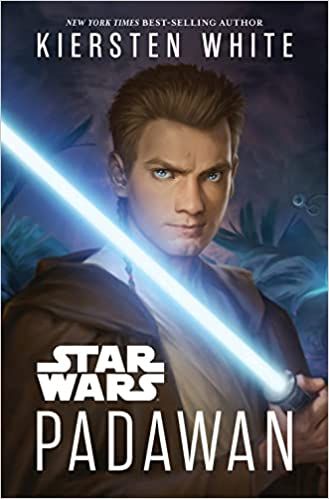
Padawan
- Number of Pages
- 416
- Genre
- Sci-Fi, Fantasy
- Publisher
- Disney Lucasfilm Press
- Gripping
- Excellent expansion on the Star Wars mythos
- Good coming of age story
- Rounds out Obi-Wan Kenobi very well
- Too many doubts of self-doubting
The plot takes place over three time periods: present day, ten years prior, and fifteen years prior. While the choice can at times feel clunky, it also gives readers a chance to explore these beloved characters without the restraints of chronology. Jose Older also gives us multiple plots to explore— one where Han and Lando are attempting to steal a mysterious transmitter from criminal Fyzen Gor, and another where, many years later, Lando comes to Han fleeing Fyzen Gor’s team of assassins. Since we have the movies, a bit of the tension is naturally removed from the novels, since we know from the get-go that all the characters are going to survive long enough to get their own films, but the book is still a compelling, new take on a classic duo.

Last Shot
- Action-focused plot
- Integrates Star Wars comic book characers
- Features non-binary character
- More diverse than some other Star Wars fare
- Jumps between time periods can get distracting
It earned praise for Wendig’s in-depth understanding of Star Wars minutiae, but was also criticized for its writing style and clunky present-tense phrasing. If you’re new to the world of Star Wars books, it may be a good place to start, but if you’ve read your way through a few of the novelizations, it’ll probably strike you as an awkward departure in tone. Still, the action sequences are plentiful, if not memorable, and the story should be compelling for those interested in the events before the new trilogy.
Unlike a typical Star Wars novel, Aftermath tells a series of smaller stories that are still connected, but are less cohesive than other novelizations. Split into three parts, the book follows a variety of characters, including a young rebel scout, as they attempt to calm the rising chaos in the wake of the destruction of the Empire. While there are some classic characters included, like Admiral Ackbar, Admiral Sloane, and a brief mention of Princess Leia, the majority of the novel’s cast are brand new.
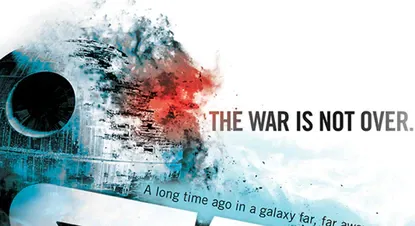
Aftermath
- Introduces new characters
- Expands the canon
- Adds texture to transitional period in Star Wars chronology
- Occasionally clunky writing style
Written by New York Times bestselling author E.K. Johnston, the book focuses on Padme’s transition from Queen to Senator after she is succeeded by Queen Reillata. After she accepts this responsibility, Padme selects a new group of handmaidens for the role and begins to acclimate to her new position. But the slow pace of politics is not a natural fit for Padme, and she quickly grows restless and hopes for more action.
Unlike other Star Wars novelizations, Queen’s Shadow is more character than action-driven. Johnston’s focus seems to be less on dramatic fight scenes and more on quiet dialogue and detailed world-building. Also, like Lost Stars, Queen’s Shadow is written for a young adult audience, though readers of all ages should enjoy its political intrigue and insight into the character of Padme.

Queen's Shadow
- Builds on the prequels
- Expands on a well-loved character
- Provides insight into politics of the SW universe
- Slower pace
The story balances action and dialogue, exploring the dynamic between Asajj Ventress and Quinlan Vos as they struggle to figure out how to share power between the two of them and how to reconcile their differing allegiances. It also explores their budding romance, which could be enormously cheesy (ex-Sith, Jedi Knight— it sort of writes itself) but instead ends up being a remarkably touching look at a character who’s too scarred to let their guard down easily and one without those same limitations. The light side/dark side dynamic is also compelling enough to give new life to a story that is fairly predictable, despite its nuance. It’s a story all fans can enjoy, though Clone Wars fans especially should give it a read.
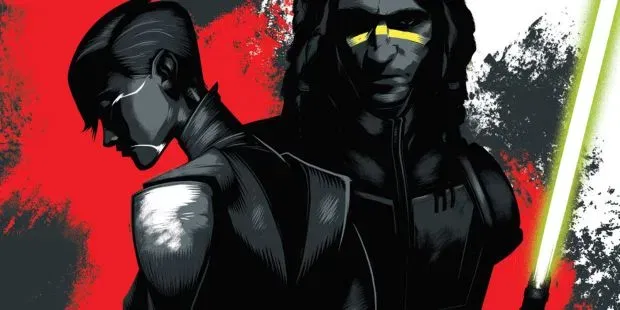
Dark Disciple
- Interesting, unexpected pairing
- Explores nuances of Light & Dark sides
- Works as a stand-alone
- Somewhat predictable at times
The book follows the relationship between Thane Kyrell and Ciena Ree, two children who grow up together on the planet of Jelucan. An encounter with General Tarkin (a character well known to movie fans) leads the two to join the Empire, training as fighter pilots in the war against the Rebellion. As they train together at the Imperial Academy, their friendship grows into the possibility of something more. But the two have markedly different opinions on the Empire— Ciena is certain of her loyalties while Thane is sympathetic to the plight of the Rebellion. As the war continues to rage on, the two must choose their own paths.
Even though the novel is marketed as a young-adult read, many readers have disagreed with this characterization, calling it a suitable choice for any adult reader. Grey’s writing is excellent; her enthusiasm for the franchise shines through and her understanding of the novel’s setting is remarkably clear.
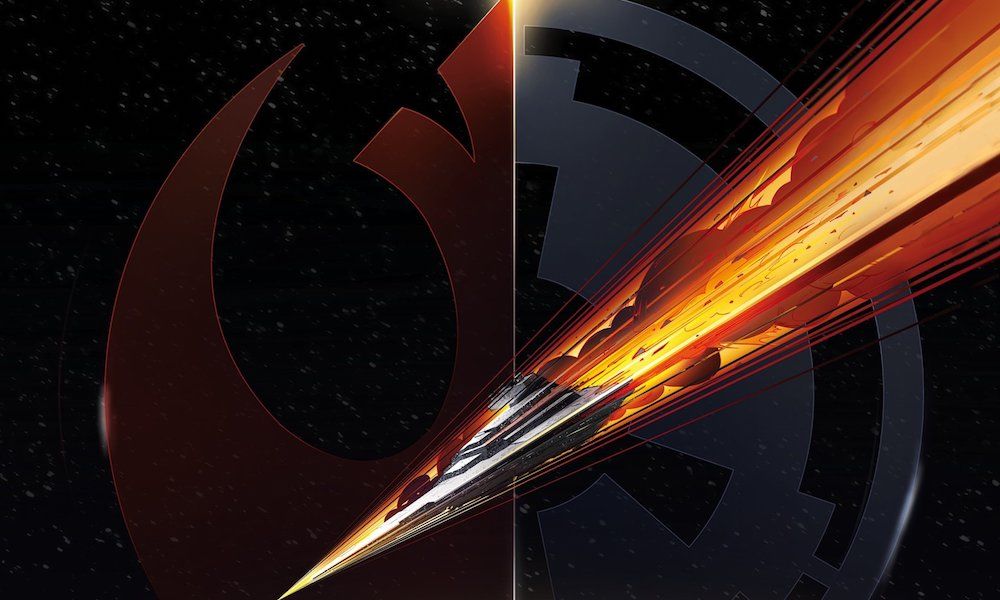
Lost Stars
- One of the best reviewed Star Wars books
- Fan favorite
- Written by New York TImes' best-selling author Claudia Grey
- Over 500 pages may be a bit long for some
Set around Leia’s sixteenth birthday, the novel focuses on Leia’s growing awareness of an unnamed resistance to the Empire and her desire to help those in need escape the Empire’s grasp. Motivated by her parents’ seeming distractedness, she launches a mission of her own to smuggle refugees from an occupied planet back to Alderaan so that they can have new lives there. But when she returns, she’s reprimanded and discovers that her parents’ “distractedness” is really due to an increasing focus on strategizing against the Empire, and that her actions have caused a major disruption to their plans. The rest of the book revolves around Leia’s continued desire to participate in the resistance and the actions she takes to aid her parents— as well as her first (pre-Harrison Ford) love interest.
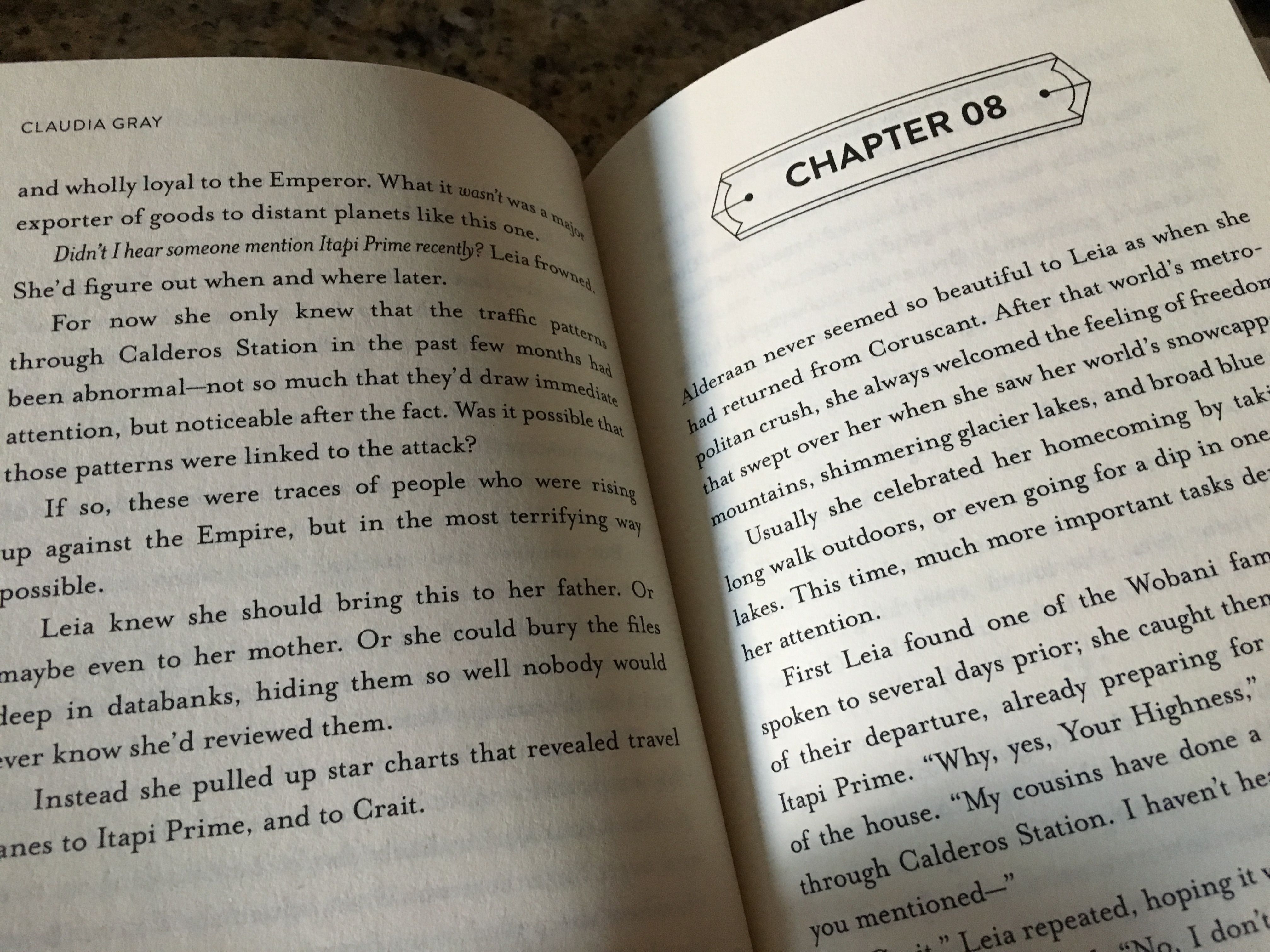
Leia, Princess of Alderaan
- Budget friendly
- Builds on mythology while remaining loyal to original
- Well developed characters
- Not for those looking for a more mature Leia
The book is set five years after the Battle of Endor, the chief event of Return of the Jedi. The Republic is now in control of the galaxy, led by all the classic characters from the original trilogy. But an uprising, led by Grand Admiral Thrawn with the help of a mad Jedi clone, poses a major threat to the Republic’s power. Luke, Han, Lando, and Princess Leia work to overcome the uprising, and the mad Jedi clone, who learns of Leia’s pregnancy and tries to hunt her down so he can train her two children in the dark side.
The book fuses old and new elements, introducing an original antagonist and a fresh perspective on the political dynamics of the universe. It’s an action-driven read that lays the groundwork for further expansions of Star Wars lore.

Heir to the Empire
- Part of the acclaimed Thrawn trilogy
- Compelling writing
- Expands Star Wars universe
- Not a stand alone
I, Jedi tells the story of Corran Horn, X-Wing fighter pilot and grandson of a legendary Jedi master. After returning home from an ambush mission, he discovers that his wife, Mirax, is missing. In order to go and rescue her, he decides that he must first learn the ways of the Force. He joins the Jedi Academy, using the lightsaber of his grandfather and begins to train under Luke Skywalker, giving readers a closer look at a much-beloved character. We also get a brief glimpse of Leia, who visits the academy, and of her children, including young Anakin, before Horn decides to leave the academy and continue the quest for his wife solo.
It’s a hefty read, but a good one, filling in some of the gaps left between the original trilogy and the prequels. It’s one of the first Star Wars books to incorporate the content of other novelizations, relying heavily on plot elements borrowed from the popular Jedi Academy Trilogy. But, even if you haven’t had a chance to read the trilogy, the novel doesn’t rely on prior knowledge to be understandable or enjoyable.
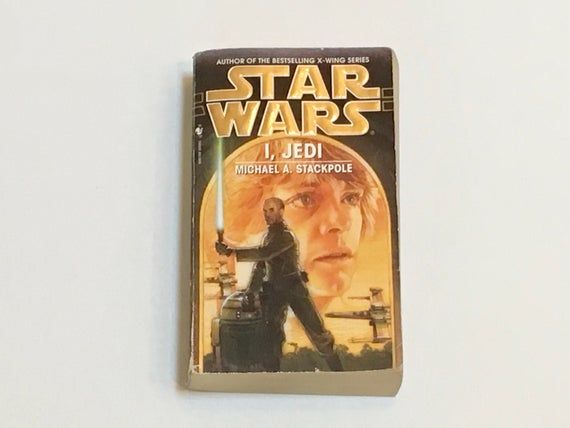
I, Jedi
- Dramatic, action-packed story
- High stakes sequences
- Echoes themes of original trilogy
- Quite a hefty read
The book takes place largely before the events of the original trilogy, focusing chiefly on what led Tarkin to join the Empire and how he came to know Darth Vader and Emperor Palpatine. While it’s set during Tarkin’s adult life, Luceno includes flashback chapters that elaborate on Tarkin’s youth on the Outer Rim and some of his early memories, including his recounting of a plan to ensnare a group of pirates and send their ship directly into the system’s sun. broadcasting their death to deter any further misconduct. The episode, like much of the rest of the novel, reveals how truly sinister Tarkin’s character is and gives readers a taste of the cold-bloodedness that led Tarkin to destroy Princess Leia’s home planet in the original trilogy.

Tarkin
- Provides origin story
- Villain character study
- Elements of intrigue and mystery
- Tries hard to tie in movie canon unnecessarily
The writing style is not dissimilar from the beloved Thrawn trilogy, though writer Paul Kemp is slightly less skilled than Timothy Zahn. And while the bulk of the book is dedicated to the Sith Lords, some other characters also appear, including Rebel forces working to stop the Empire and aid the movement to free Ryloth. The most compelling of these is Cham, a young fighter pilot whose friend is murdered by Vader in the first chapters of the book. He’s a well-written protagonist, and it’s compelling to watch him as he fights to overtake the Sith and defend his planet. It also helps provide some balance and keep the book from becoming too dark in tone.

Lords of the Sith
- Explores new moments in Darth Vader canon
- Action sequences
- Original subplots
- More about the Rebels than the Sith
Types Of Star Wars Books
Star Wars books can fall into (roughly) three different categories. The first is novelizations of movies and shorter, middle reader books, which tend to be less popular with fans and more popular with younger readers. The second, significantly more fan-beloved category is the original, pre-Disney series, written back when Lucas Films was still its own thing. If you’ve ever seen a beaten up paperback with fan art of a lightsaber-wielding hero adorning its cover, this is the umbrella it falls under. “Classic” Star Wars literature also falls into this category, such as books like the Thrawn trilogy and the Jedi Academy series. When these were initially released, they were considered part of the Star Wars Expanded Universe series. However, when Disney began development on the Force Awakens trilogy, they rebranded these books as the Star Wars Legends series, declaring them non-canon— another way of saying that the plots of these books wouldn’t affect the construction of the new trilogy. So if a character died in the non-canon books, that character may still be alive in the setting of the new films. This distinction gave Disney much more leeway with the movies, allowing them room to construct new plots without worrying about what previous writers had already attempted.
The third wave of Star Wars books came in 2014, when Disney launched a second, restructured line of novels, all set in the canon established by the Force Awakens trilogy. So even if these books didn’t focus on characters mentioned in that trilogy, they still exist within the same world and follow roughly the same rules. Claudia Gray has penned several stories that fall in this category as have other popular Star Wars authors like Timothy Zahn and Kristie Golden. Several of these new canon books have also achieved significant widespread popularity, often breaking onto the list of New York Times bestsellers and earning their author's acclaim from more mainstream sources.
Now that you've read through this guide and learned more about the best Star Wars books, you can revisit our list and find the perfect Star Wars book for you!
FAQ
Q: What’s the difference between canon and non-canon Star Wars books?
Non-canon Star Wars books are widely known as the Star Wars Legends books. They used to be called the Expanded Universe, until Disney ate up LucasFilms in the early 2010s and then declared the old book series to be non-canon to the new trilogy it was going to create. Most all Star Wars books written in the twentieth century fall into this category, as do several more recent releases. Canon Star Wars books are the ones that Disney has deemed as acceptable to the official Star Wars storyline. These have all been released since Disney’s acquisition of LucasFilms; even though some of them take place before the original trilogy, none of them were written before 2010.
Q: Who’s the most popular Star Wars author?
Since there are ostensibly two categories of Star Wars books, old and new, it seems only fitting to pick an author for each category. For the old, non-canon books, the most popular author was likely Timothy Zahn, who penned the notable Thrawn trilogy along with fourteen expanded Star Wars universe novels in total. He’s widely noted for the quality of his work, which die-hard Star Wars fans hail as some of the best in the franchise. For newer books, Claudia Grey is probably the most popular author, having penned five books since Disney started its new canon releases. She hasn’t quite reached the seismic popularity of Zahn, but her books have been well received by fans and besides, she’s only had the last 10 years to achieve what he did in 30.
Q: Where should I start with the Star Wars books?
Not to sound like a walking billboard for Timothy Zahn, but the Thrawn trilogy is a great place to begin. From there, the Jedi Academy is a good continuation, even though they’ve gotten mixed reviews from fans. If neither of those are your cup of tea, it can be helpful to go chronologically and start with some of the earlier books that focus on the plot of the first trilogy. Once you’ve made your way through the Expanded Universe (or Star Wars Legends, as it’s also called), you can move your way into the more recent, Disney-ified fare. But know in advance that the series are very clearly separate— the lore of the Expanded Universe doesn’t carry over into the new canon books.
Q: Are the Star Wars books the same as the movies?
The short answer: no. The longer answer: it depends. Unless you’re reading a direct, film-to-novel adaptation, you’ll probably be hit with new info, characters, and descriptions that aren’t in the movies. And even in those direct, film-to-novelizations, you’ll probably stumble across a few surprises, since if the writers just took the script and turned it into dialogue, it’d be a pretty boring book. If you’re reading a book that’s not a novelization, odds are that the majority of it is going to be different from the films, even if it includes some familiar names, faces, or settings.
Q: What’s the best Star Wars book?
Ask 10 different fans and you’ll get 10 different answers. But the Thrawn Trilogy, by Timothy Zahn, is pretty universally beloved. The Darth Bane trilogy has also scored pretty solid reviews. Honestly, any of the books on this list are a good starting place.
Q: Does the Mandalorian have a book series?
This is an easy one. Nope. Not yet, at least. The Mandalorian: An Original Novel was slated to be released this year, but was recently (as of March, 2021) cancelled by Disney. They’re still working with the author, Adam Christopher, to create a new novel, but no word yet if it will be Mandalorian-oriented or just another, run-of-the-mill Star Wars title.

